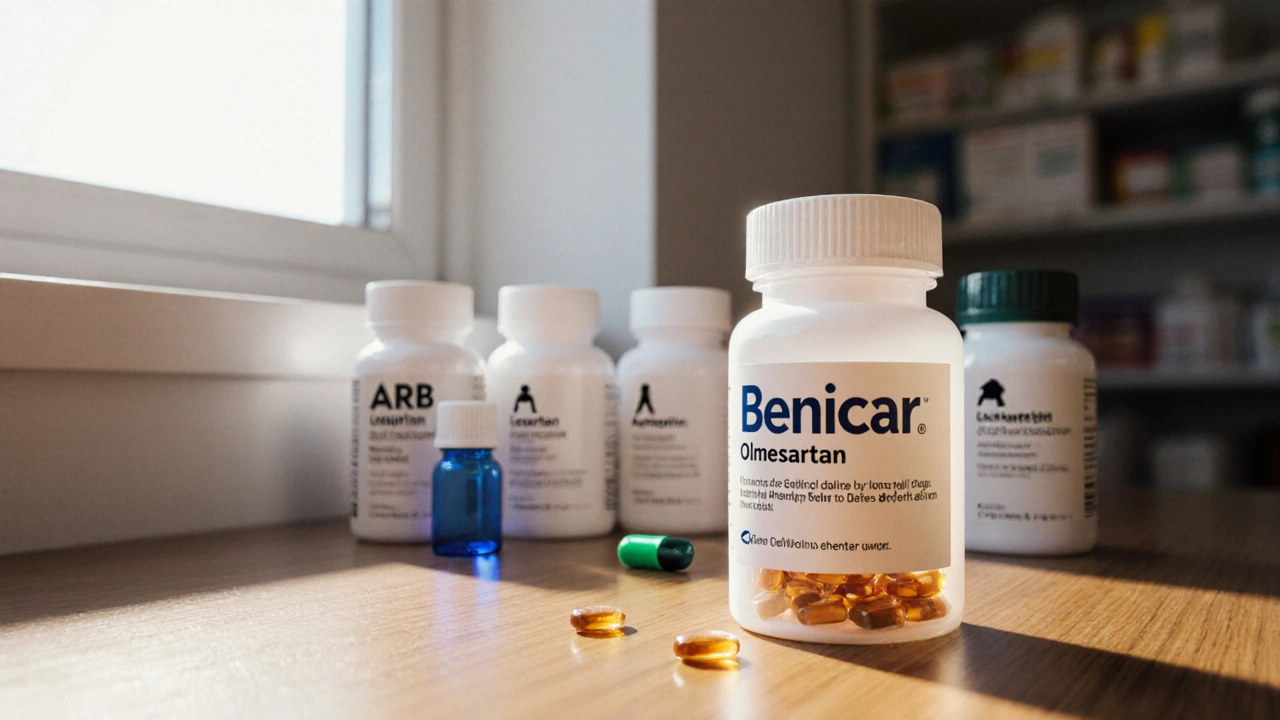
Benicar (Olmesartan) vs. Other Blood Pressure Drugs: A Detailed Comparison
A clear side‑by‑side comparison of Benicar (Olmesartan) with common hypertension drugs, covering mechanisms, dosing, side effects, cost, and best‑fit scenarios.
When dealing with blood pressure meds, medications prescribed to lower high blood pressure and reduce cardiovascular risk. Also known as antihypertensives, they play a key role in preventing heart attacks and strokes. Understanding these drugs helps you manage your health and avoid common pitfalls. Below we break down the most common groups, why they matter, and what to expect when you start therapy.
ACE inhibitors, drugs that block the conversion of angiotensin I to angiotensin II, a potent vessel‑tightening hormone are often the first line for many patients. They lower pressure by relaxing blood vessels, which also eases the heart's workload. Typical examples include lisinopril and enalapril. A key attribute is their ability to protect the kidneys, making them a favorite for people with diabetes.
Beta blockers, medications that reduce heart rate and the force of contraction by blocking adrenaline receptors work differently. They are especially useful after a heart attack or in patients with irregular heartbeats. Common names are metoprolol and atenolol. While they control pressure, they may cause fatigue, so doctors balance dosage carefully.
Calcium channel blockers, agents that prevent calcium from entering smooth‑muscle cells, keeping arteries relaxed are another pillar. Drugs like amlodipine and diltiazem help people whose blood pressure spikes at night. They also aid in treating chest pain (angina). Side effects can include swollen ankles, but the benefit of steady pressure control often outweighs the inconvenience.
Diuretics, sometimes called water pills, increase urine output to lower fluid volume and pressure are sometimes combined with other classes for stronger effect. Hydrochlorothiazide and furosemide are the most known. They work best in patients with fluid retention, but can deplete electrolytes, so monitoring labs is standard practice.
These four groups form the backbone of hypertension therapy, and most treatment plans mix them based on individual risk factors. The semantic triple "blood pressure meds encompass ACE inhibitors" illustrates the hierarchy; similarly, "beta blockers reduce heart rate" and "calcium channel blockers relax arteries" link function to class. Knowing these relationships lets you ask the right questions at the pharmacy.
In real life, the choice often depends on age, kidney function, and co‑existing conditions. For instance, a diabetic patient may benefit most from an ACE inhibitor because of its kidney‑protective effect, while an athlete with occasional high readings might start with a low‑dose diuretic. Understanding the attributes—mechanism, typical dose range, common side effects—helps you work with your doctor to fine‑tune therapy.
Beyond the main classes, many newer agents target specific pathways, such as ARBs (angiotensin‑II receptor blockers) that act like ACE inhibitors but with a different side‑effect profile. Some patients switch to ARBs if they develop a cough from ACE inhibitors. This illustrates the predicate‑object relationship: "ARBs provide an alternative when ACE inhibitors cause adverse reactions."
Finally, lifestyle still matters. Even the best blood pressure meds work best when paired with reduced sodium intake, regular exercise, and stress management. Monitoring your blood pressure at home gives immediate feedback on how well the medication combo is doing, and it helps your clinician adjust doses before problems arise.
Now that you’ve got a solid overview of the drug families, what to look for, and how they fit together, the list below will dive into specific articles. You’ll find buying guides for generic versions, safety tips, and deeper comparisons that match the classes we just covered. Explore the collection to get practical steps you can apply right away.

A clear side‑by‑side comparison of Benicar (Olmesartan) with common hypertension drugs, covering mechanisms, dosing, side effects, cost, and best‑fit scenarios.